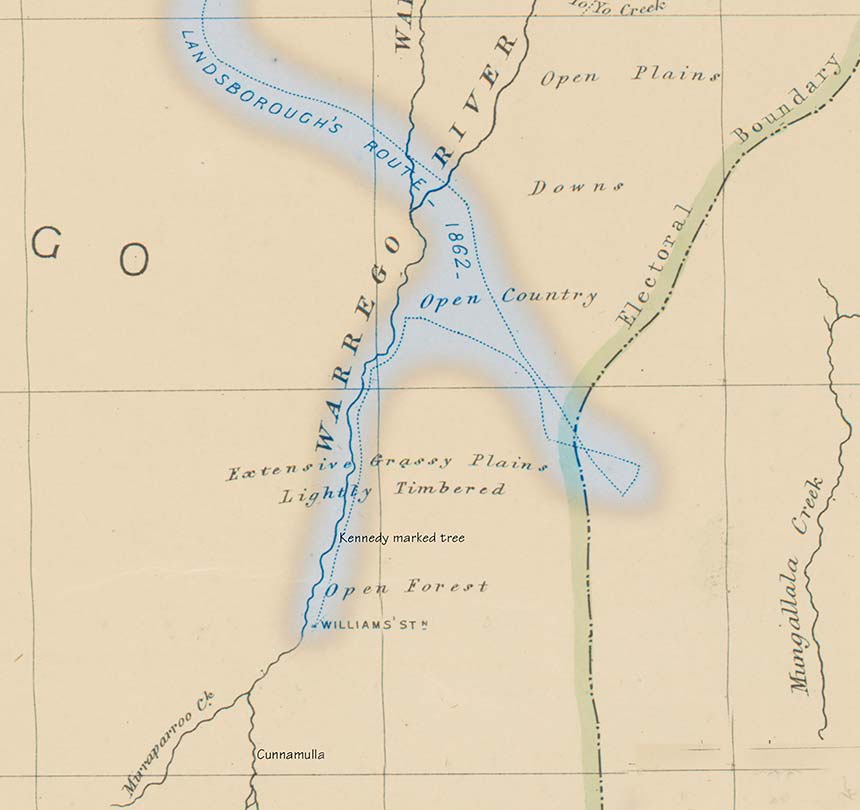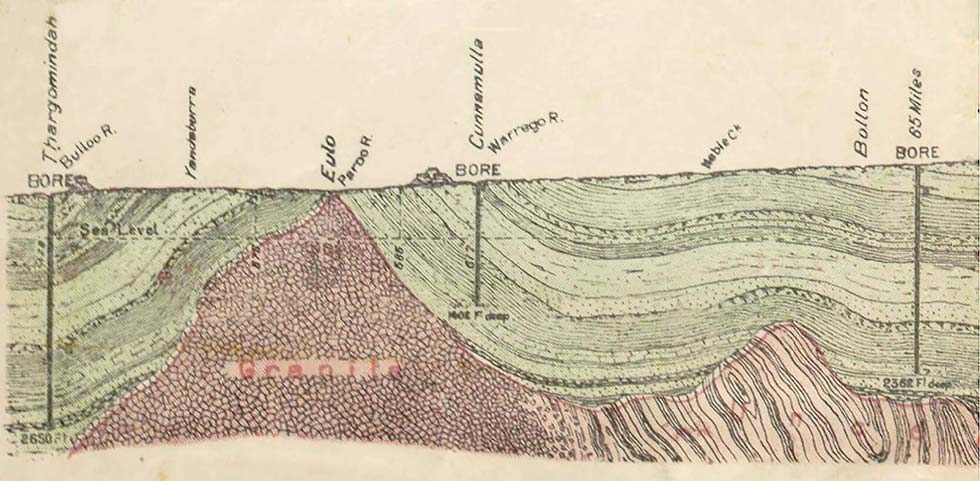The riddle of the sands
To understand where such a large amount of sand and sediment as we see around us in the landscape today came from we need to reach back to the story of the Winton Formation and the Eromanga Sea. This formation is a rock unit that blankets large areas of central-western Queensland.
It consists of sedimentary rocks such as sandstone, siltstone and claystone. The sediments that make up these rocks represent the remnants of the river plains that filled the basin left by the Eromanga Sea - an inland sea that covered large parts of Queensland and central Australia around 140 mya. Great meandering rivers, forest pools and swamps, creeks, lakes and coastal estuaries all left behind different types of sediment.
In some areas, the Winton Formation is over 400 metres thick.To bring with them such a huge amount of sediment, the rivers that flowed across these plains must have been comparable in size to the present-day Amazon or Mississippi rivers. As more and more sediment was brought in, the margins of the inland sea slowly contracted.
By around 95 million years ago, the deposition was complete and the inland sea would never be seen again.
Moving the sediments around
While this ancient process accounts for why there is so much sediment in place over the Eromanga Basin including south west Queensland, it is more recent activity that explains the actual formation of the sandhills and dunefields we see around us today.
This has occurred as the Warrego and Paroo rivers have carried down sediments and deposited these in the river channels and across the floodplains.
Up here in the energetic mid level of the catchment we find plenty of sand and gravel in the river channel.
As the river channel changes and meanders around, these sandy sediments then get exposed to the wind which shapes them to form extensive areas of sandplain and limited areas of dunefield.
So there you have it really. That's why we find dunefields cropping up along the mid section of the Warrego reaching down from Wyandra to Cunnamulla and beyond.
Landsborough and the sandhills
The first record we have of the sandhill country on the eastern banks of the Warrego River comes from the explorer William Landsborough as he travelled down the Warrego in 1862. At this time the river frontage was just being taken up by some advance squatting runs.

Landsborough's journal records that he arrived at the present day locale of Cunnamulla by following:
“the road which came down the eastern bank of the river over well-grassed rich level country and sandy ridges for about twelve miles”.
Home to cypress pine
One of the reasons that the sandhill country is so important in the Cunnamulla story today is due to the cypress pine forests that once grew on this elevated ground.
Today one of the few remnant of these trees that remains is the Robber Tree you can visit as part of the Cunnamulla town heritage walk.
The tree is seen here in the 1920s. By this time the surrounding cypress pine forest had been largely removed to provide the timber the town needed for its expansion from the 1880s onwards.




